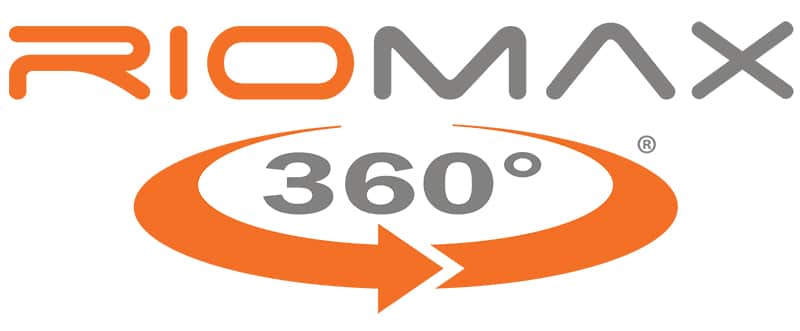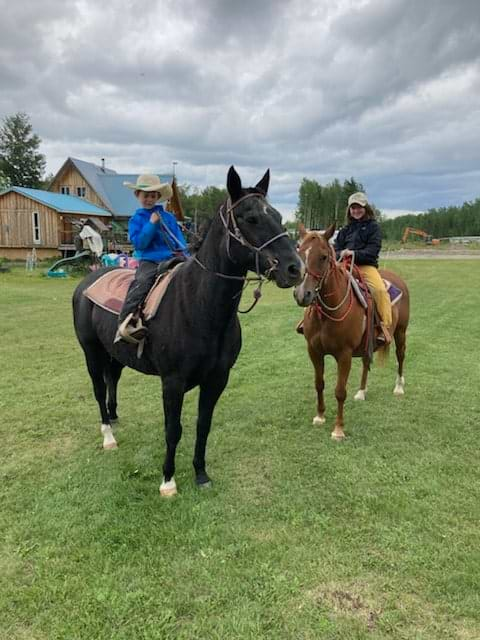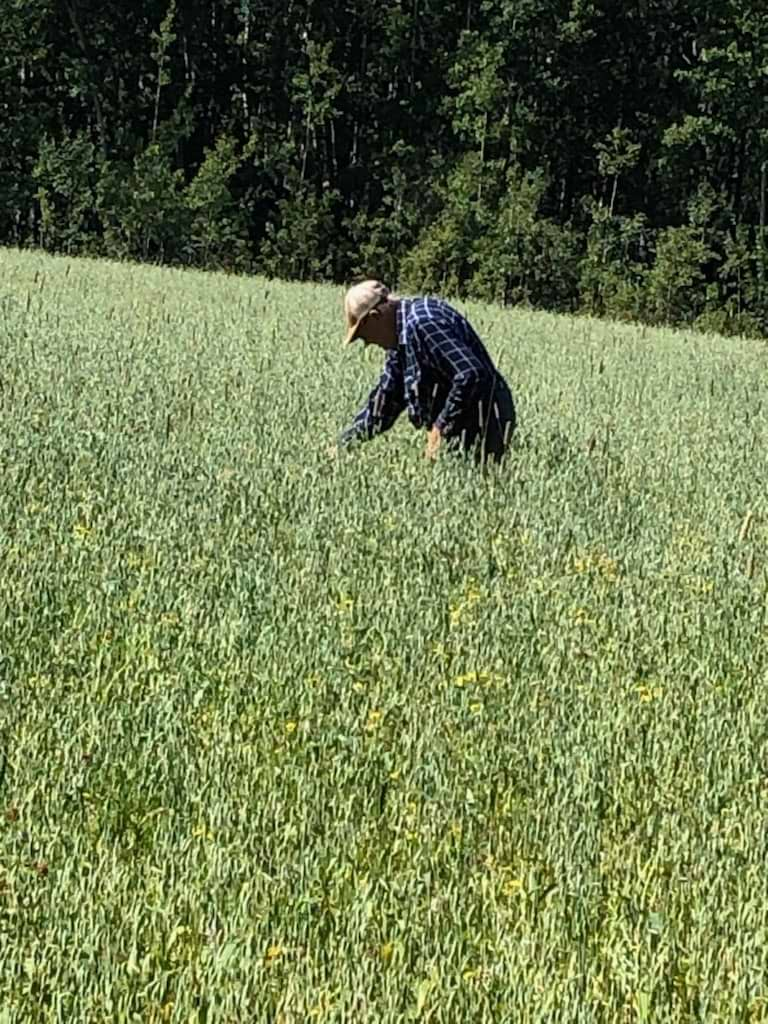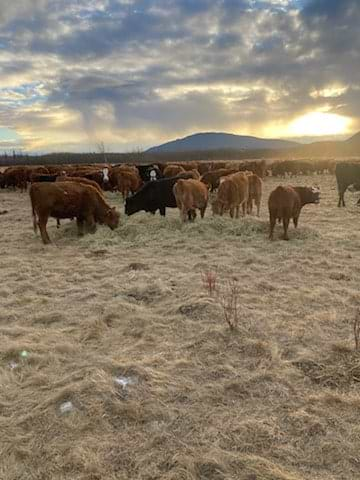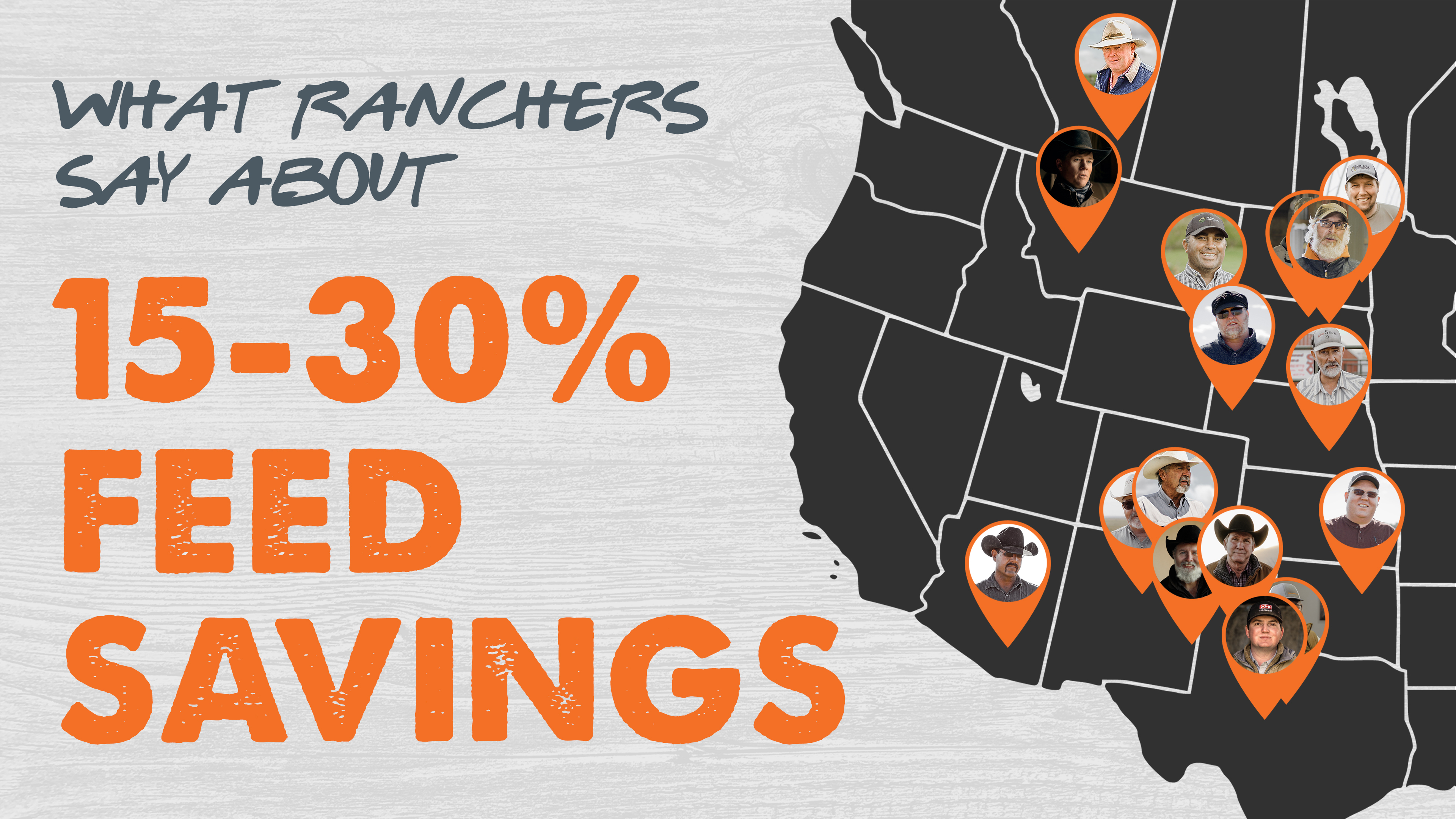Riomax Saves The…Hay
Mike Mant found that Riomax met all his expectations, and more
Mike & Leah Mant
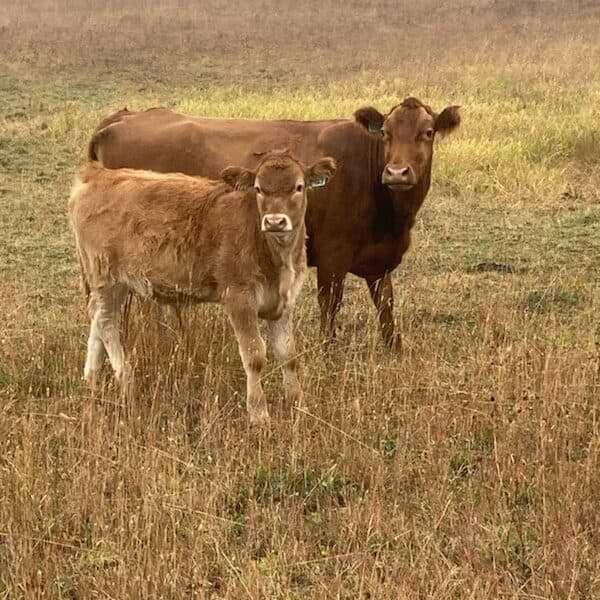
Fort St. John, British Columbia
Sometimes, all it takes is a word from a trusted source. At least that’s what Mike Mant learned.
Mant and his wife, Leah, along with Leah’s parents, operate a 300 head commercial cow-calf ranch and farm six sections in northern British Columbia, Canada, near the townsite of Hudson’s Hope. They are joined by Mike and Leah’s children—Abi-Gail, 10; Milo, 7; and Janey, 2.
Mant married into ranching and found his passion. Or at least one of them. “The kids are with us for everything we do and that is the main reason we love it. It’s truly a remarkable way of life to be able to do what we love with the people we love,” he says.
“We always preg check our cows and semen test our bulls,” Mant says. In the fall of 2022, when the vet did the annual preg check, the results were disappointing—15% of the cows and heifers were open.
It was a drought year, certainly, but the breeding soundness exam on the bulls the spring before was solid. “The cows just weren’t in great condition,” Mant recalls. “We talked to our vet when she was here and she suggested, ‘There’s this mineral called Riomax that people are having really good success with.’”
When your veterinarian sees great results when other ranchers make a change, it’s time to perk up. That’s what Mant and his family did and it turned everything around.
“A lot of people make big changes to make small things happen. We made a small change and for us, that was a big, big difference.”
Unique Genetics
In a business dominated by the British breeds of Angus and Hereford, and a handful of European breeds such as Simmental, Charolais and Limousin, the East Creek Ranch uses Blonde d’Aquitaine bulls. And they couldn’t be happier.
The mature cows carry Sim-Angus genetics and are bred to Blonde d’Aquitaine bulls. Depending on the year and pasture conditions, they’ll keep 40 to 60 replacement heifers which are bred to Red Angus bulls.
“We’re really happy with them,” Mant says of the Blonde bulls. “They seem to put muscle on the calves and the calves have really good weight gain. They’re easy calvers and they’re fairly tall, lanky calves when they come out, and they get up and going right away.”
Calving season is April and May. The snow is typically coming off then and pasture grasses are hurrying to take advantage of the short growing season. “We usually cut off calving the end of May because we need to be in the fields then,” Mant says. “So we calve for those two months.”
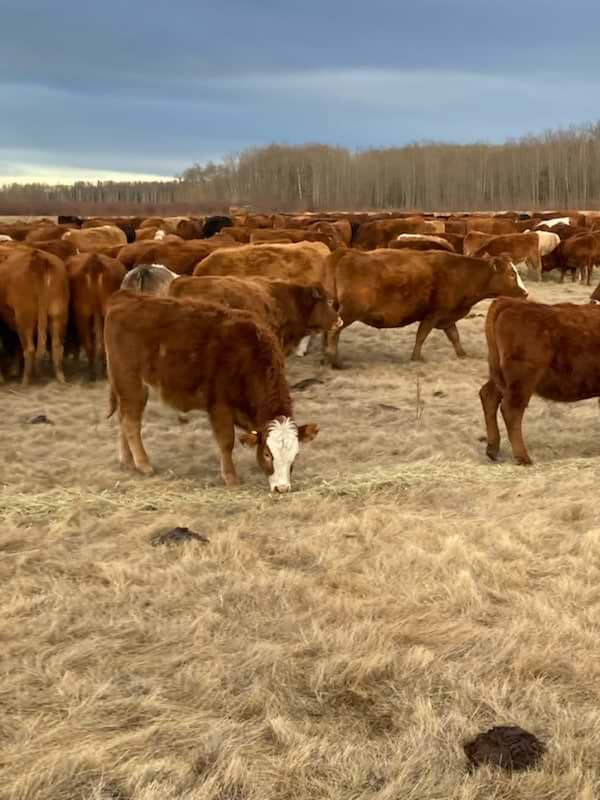
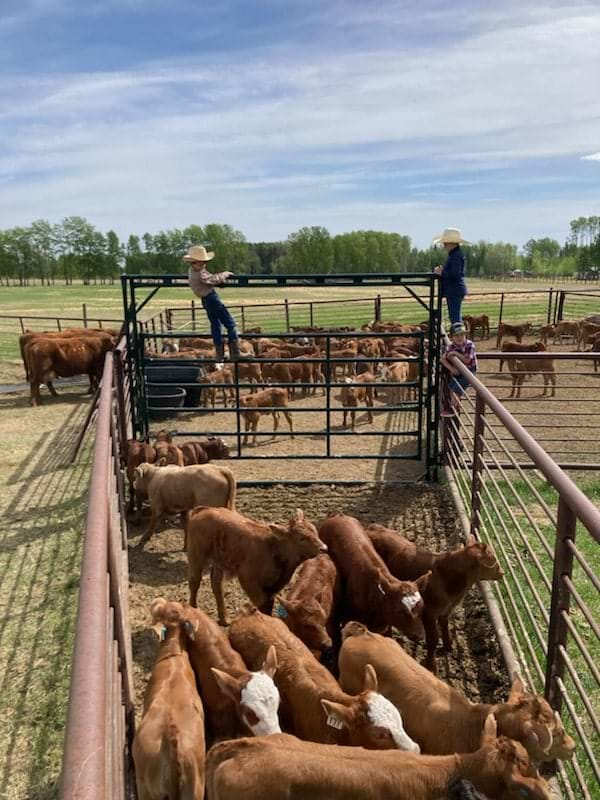
It’s all-natural breeding in multi-sire pastures. They’ll typically run 12 Blonde bulls with the mature cows and three Red Angus bulls with the first-calvers.
Calves are weaned in October before the snow gets too deep and the steers are shipped right off the cow. Heifers stay on the cow until January, when they’re weaned and replacements selected. Heifers that aren’t kept for replacements are shipped.
While the calves traditionally were sold at a nearby sale barn, they’ve been shipping calves directly to a feedlot the past several years. Either way, buyers take notice. “They seem to do fairly well,” Mant says of their crossbred calves. “We have lots of requests to get them back or to buy direct, so they must be doing fairly well. Any time we’ve sent calves to the auctions, we’ve actually topped the auction, so we’re pretty happy with them.”
Ranching in Cold Country
Like ranches all across the northern U.S. and in Canada, winter weather is the dominant factor. “We are fairly north, so we get quite an accumulation of snow in the winter,” Mant says. “We’ll have stretches in the winter where it’s minus 40 Celsius (minus 40 F) for about 10 days, and we’ll usually get two cracks of that.” But generally, he says winter temperatures run from minus 15 C (5 F) to minus 25 C (minus 13 F) with plenty of snow.
Winter generally sets in by the middle to end of October. “And that’s what pushes us. When we get that first real dump of snow that’s going to stick is when we ship the steer calves.”
Cold and snow also necessitate winter feed. That’s where the farm enters the picture. They grow different forages as hay crops, silage and green feed with the idea of being self-sufficient, closing the circle so they don’t need to buy any feed.
The ranch and farm are in the Peace River Valley, where the fertile bottomland soil makes great farming. The ranch lies near the foothills where the Rocky Mountains erupted eons ago and began their southward march. “We have a lot of ridges and mountains surrounding us,” Mant says, “and we have fairly rolling pastures.”
Unlike the river bottom, the soil in the upland pastures is thin. There’s about an inch of topsoil and underneath is sandy clay. “We don’t have a lot of super rich soil, so we have to do things to enrich the soil,” Mant says. “We do a lot of rotational grazing, a lot of rotational feeding to try to build the soil.”
Pastures are rotated by keen observation. “We go off the grasses and what’s left and try to rotate before they’ve eaten it down too far. We’re just trying to make sure that we’re not overgrazing and taking too much out of the soils,” he says.
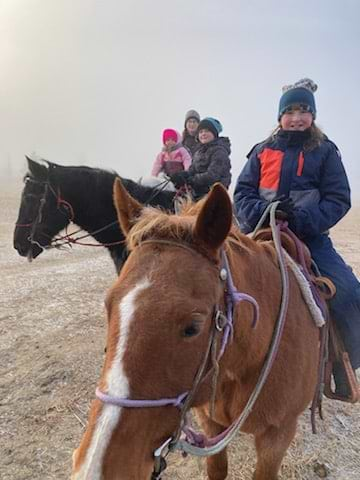
Riomax Saves the Hay
Given that the farm produces nearly all their own feed, having enough to get through the winter is critical. Of the benefits Mant has seen from Riomax, hay savings is perhaps the most important.
They started with the orange tubs in the fall of 2022 in the wake of the disappointing breed-up described above. Mant contacted Riomax and a salesman described the benefits and sent him information to read.
Mant was convinced enough to give Riomax a try, so he ordered one pallet of four tubs. Mant was blunt. He told the salesman he wanted a product that was going to make him money or substantially increase the herd’s health. “I explained to him that we were giving it one year and I wanted to see if we got results. If not, we won’t use the product.”
It took less than a year.
“What we noticed very quickly was, as we got into the winter of 2022 and the cows had been on it for about two months, we could feed less. They were more content with less feed.”
As the winter progressed into spring, Mant determined they were feeding about 15% less feed. “And then we found they got into shape faster and they stayed in shape.”
SEE WHAT OTHER RANCHERS HAVE TO SAY ABOUT 15-30% FEED SAVINGS
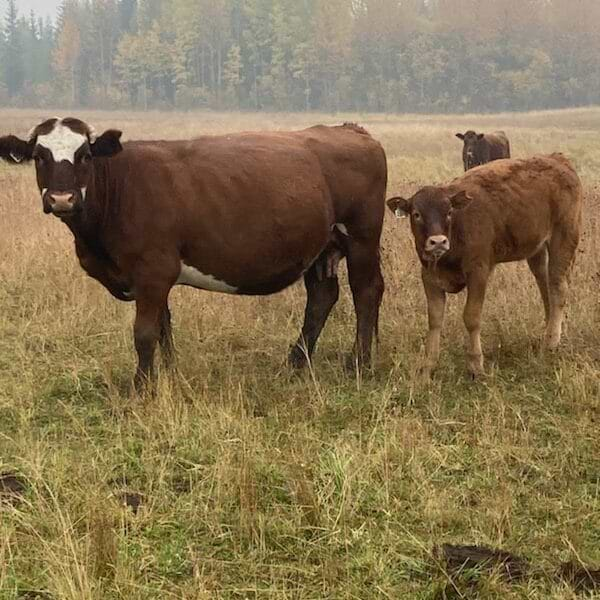
And calving went a lot smoother. The year before, they had to assist around 30 calves because of a malpresentation like a head or leg back or a calf coming out backward. Calving season 2023 saw that cut to six. “Going from 30 to six was a huge advantage,” he says.
From that point, the benefits just multiplied. “We made sure they had Riomax and salt in front of them the entire year in 2023,” he said.
Typically, their calves weaned at around 480 pounds. After being on Riomax, the 2023 steers averaged 510 pounds. “They’re a little thicker,” Mant says of the calves. “They’re healthier. That was the first year we did not have to treat a calf for scours.”
Like most first-time buyers, Mant had to blink at the up-front cost. But the numbers showed the Riomax advantage.
“We’ve tried a lot of different tub supplements. But what we really noticed was the amount they consumed. We could put out four tubs of a competitor’s supplement and they’d go through all four tubs in about two weeks. If we put out four tubs of Riomax, it’s six weeks. So it may cost twice as much, but it’s lasting longer,” he says.
“I actually think Riomax is making us money and we have a stronger, healthier herd, which makes our work less. And for us, it’s not just to make more money, but it’s saving time. It’s done more than pay for itself.”
Johnson has a monthly meeting with his four full-time cowboys where they do a feed report. “I have an Excel spreadsheet where I enter all the consumption of whatever we’re feeding, the pasture and the number of cattle in that pasture. So I know what it’s costing me per day per cow. When I started feeding Rio, the cost was comparable to whatever mineral I was feeding before, but the production numbers increased quite a bit.”
Ranch wide, he thinks Riomax helps his cattle. “I feel like the performance is more consistent than it was before and I notice that their hair coat looks better than it did before,” he says. “I definitely think it’s a good product.”



